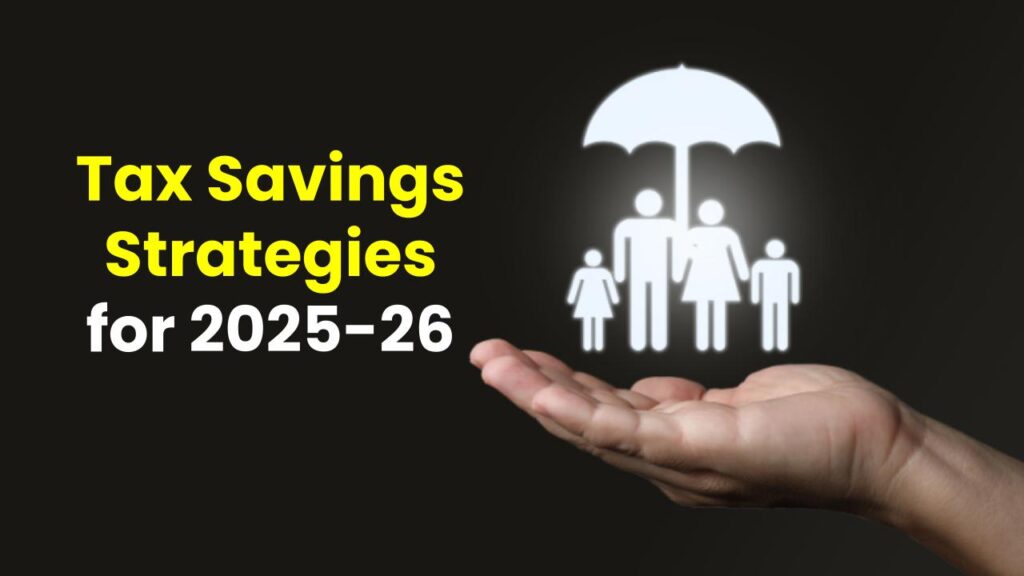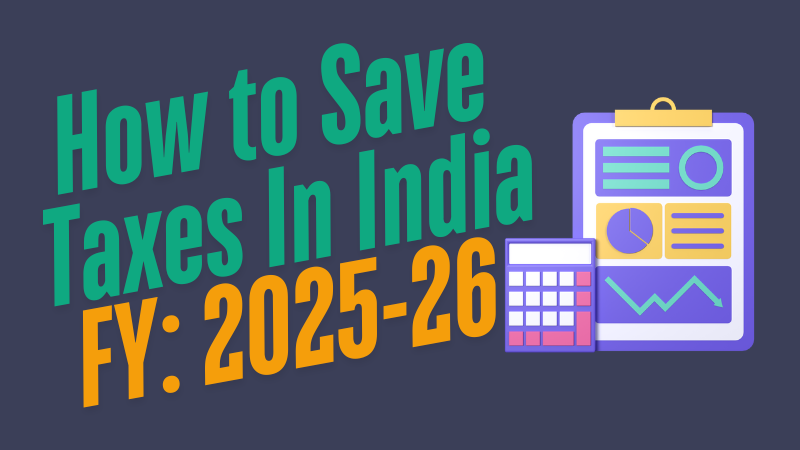💰 Best Tax-Saving Strategies Under New & Old Regime in FY 2025-26
Tax season is often stressful for many Indians — salaried professionals, small business owners, or freelancers alike. With the dual tax regime (Old and New), the confusion deepens: Which regime should I choose? and How do I save the most tax legally?
This comprehensive guide explains:
- The difference between the two regimes
- Smart strategies to save tax under each regime
- Practical ways a common man can reduce their tax burden
- And 10 FAQs at the end for quick clarification
Let’s begin your journey to smarter tax planning. 💡

🏛️ Overview of the Two Tax Regimes in FY 2025-26
✅ Old Regime
- Allows over 70 exemptions and deductions
- Perfect for those who have investments, insurance, and loans
- More complex filing but greater savings
✅ New Regime (Latest updates via Budget 2023)
- Simplified with lower tax rates
- No deductions/exemptions, except a few select ones
- Ideal for those with fewer investments and higher disposable income
📊 Latest Income Tax Slabs (New Regime FY 2025–26)
| Income Slab | Tax Rate (New Regime) |
|---|---|
| ₹0 – ₹3,00,000 | 0% |
| ₹3,00,001 – ₹6,00,000 | 5% |
| ₹6,00,001 – ₹9,00,000 | 10% |
| ₹9,00,001 – ₹12,00,000 | 15% |
| ₹12,00,001 – ₹15,00,000 | 20% |
| Above ₹15,00,000 | 30% |
🙋 How Can a Common Man Save Tax in India?
Here’s how an average Indian — with a regular salary or small business income — can smartly reduce tax liability:
1. ✅ Use Full ₹1.5 Lakh Deduction Under Section 80C (Old Regime)
This is the most powerful tax-saving section for the common man.
Popular 80C Investments:
- Public Provident Fund (PPF) – Safe and long-term investment
- Employees’ Provident Fund (EPF) – Auto-deducted for salaried employees
- ELSS Mutual Funds – Short lock-in (3 years), potential for high returns
- Life Insurance Premiums
- Sukanya Samriddhi Yojana (For girl child)
- Home Loan Principal Repayment
🧮 Example: Invest ₹1.5 lakh in ELSS + PPF = Save up to ₹46,800 tax if in 30% bracket
2. 🏥 Health Insurance Deduction – Section 80D
A common man must secure his health AND reduce taxes.
- ₹25,000 for self + spouse + children
- Additional ₹50,000 if you pay premium for senior citizen parents
💡 Tip: Use online aggregators like Policybazaar or ACKO to compare affordable premiums.
3. 🏡 Home Loan Tax Benefits – Section 24(b) + 80EEA
If you’ve taken a home loan, use these:
- Interest on home loan: Up to ₹2 lakh under Section 24(b)
- First-time homebuyers can get extra ₹1.5 lakh under Section 80EEA (subject to property value limits)
4. 🧓 Invest in NPS – Section 80CCD(1B)
- Additional deduction of ₹50,000 over and above 80C
- Encourages retirement savings
- Also eligible under new regime if employer contributes (Section 80CCD(2))
5. 🧾 Claim HRA (House Rent Allowance)
If you live in a rented house, claim HRA exemption under the old regime.
Formula-based, but broadly:
- 50% of salary (metro cities), 40% (non-metro)
- Actual rent paid – 10% of basic salary
6. 🎓 Education Loan – Section 80E
No upper limit. Interest on an education loan for higher studies (self, spouse, children) is fully deductible for 8 years.
7. 🧮 Use Standard Deduction (Allowed in Both Regimes)
- ₹50,000 standard deduction for salaried and pensioners is now available in both regimes
8. 📉 Use Section 87A Rebate (for Low-Income Taxpayers)
If your total income is up to ₹7 lakh (under new regime) or ₹5 lakh (under old), your tax liability becomes zero.
9. 🛍️ Leave Travel Allowance (LTA) & Food Coupons
Under the old regime, salaried individuals can claim:
- LTA for travel within India (2 claims in 4 years)
- Meal benefits as non-taxable (up to ₹50/day)
10. 🏛️ Choose Right Regime via Tax Calculators
Use government or private online tools like:
- Income Tax Department Regime Calculator
- Groww or ClearTax tax planning tools
💡 Always compare both regimes before final submission of ITR.
Read More: https://wealthfitlife.com/10-best-indian-stocks-under-%e2%82%b9200-in-may-2025/
🧠 Quick Tax Planning Checklist for Common People (FY 2025–26)
| Goal | Strategy | Estimated Tax Savings |
|---|---|---|
| Save for future | PPF + ELSS (80C) | ₹46,800 |
| Protect health | Health insurance (80D) | ₹25,000 – ₹75,000 |
| Build retirement fund | NPS (80CCD 1B/2) | ₹15,600 extra |
| Own a home | Loan interest (24b/80EEA) | ₹2 lakh + |
| Low income | 87A rebate | Full tax-free income |
📚 Academic & Government References
- Income Tax India. (2025). https://www.incometax.gov.in
- Budget 2025–26 Highlights. Ministry of Finance, India – www.indiabudget.gov.in
- Reserve Bank of India Financial Literacy Guide (2024)
- NPS Subscriber Information – https://www.npscra.nsdl.co.in
- SEBI Investor Education Portal – https://investor.sebi.gov.in
❓ FAQs
1. Which tax regime is better for a middle-class salaried individual?
If you claim deductions like 80C, 80D, HRA, old regime is usually better.
2. Can a common man switch between regimes every year?
Yes, salaried individuals can switch yearly while filing their ITR.
3. Can I invest just to save tax?
Tax benefits are secondary. Choose instruments based on your financial goals and risk profile.
4. Is HRA claimable in the new regime?
No. HRA is only allowed under the old regime.
5. Can I claim standard deduction in the new regime?
Yes. As of Budget 2023, the ₹50,000 standard deduction is allowed under both regimes.
6. Is the new regime mandatory from FY 2025–26?
No, it is default, but not mandatory. You can opt for the old regime.
7. Can freelancers or gig workers also save tax under 80C?
Yes. Any individual taxpayer can claim 80C if they make eligible investments.
8. How can I avoid TDS deductions on FD interest?
Submit Form 15G/15H if your total income is below taxable limit.
9. Is tax on crypto profits allowed to be offset against losses?
No. Losses from crypto cannot be set off against any income.
10. What if I file the wrong regime by mistake?
If caught during scrutiny, you may lose benefits. Be sure while filing ITR; no revision allowed for regime selection post submission.

